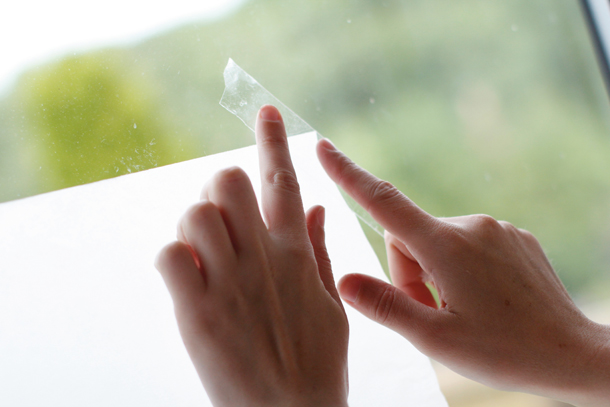DIY Photography Hacks: make a lightbox using a window and paper
Make your own lightbox

Setting up and taking creative shots in the comfort of your own home is easy to do, and in this new DIY photography project we're going to show you how to make a lightbox using nothing more than a window and some greaseproof paper.
We'll be using the technique to photograph flowers, but it can be applied to all kinds of items found around the home - try photographing slices of fruit, such as oranges and kiwi fruit, or clear sweets. The possibilities are endless!
For this tutorial we'll be using the Canon EF 100mm f/2.8L Macro IS USM lens, but if you don't have one you can use an extension tube with your standard lens.
If you can't get hold of a macro lens or an extension tube you won't be able to pick out as much detail in translucent subjects - if this is the case then you may want to consider photographing a larger flower or an alternative, larger translucent object.

1. Set up the light box
Tape a sheet of greaseproof paper to a window. You can either shoot the flowers on their stems, or cut them off as we have and tape them to the paper.

If you do this make sure you use clear tape, and spread the petals over the paper so you can see through them.

2. Switch to Av mode
Set your camera to Aperture Priority mode so you can control the aperture. Set the aperture to f/8 to keep your images sharp from front to back, and set the ISO to 100 for detailed, noise-free shots.
Get daily insight, inspiration and deals in your inbox
Sign up for breaking news, reviews, opinion, top tech deals, and more.

3. Brighten the exposure
Your camera will underexpose shots in an attempt to render bright backlight as a midtone, so go to the Exposure Compensation setting and dial in +1 stop of exposure compensation. Check your shots, and increase this as high as +2, if necessary.

4. Set the focus
Set the focus to the centre AF point, and make sure the centre of the flower is precisely in focus. If you're photographing two or more flowers, set the focal point for the largest flower in the shot.

5. Use a tripod
To ensure that your images are perfectly sharp, mount your camera on a tripod. Even pressing the button can cause slight camera shake, so for the best results use the self-timer or a remote release. You should start by composing your shot from a low angle, pointing upwards.

6. Start shooting
Now you can get shooting. Experiment by taking photos of one flower by itself or a bunch together. You can overlay different flowers on top of each other or just stick to one type as we have. It's entirely up to you which composition you prefer!